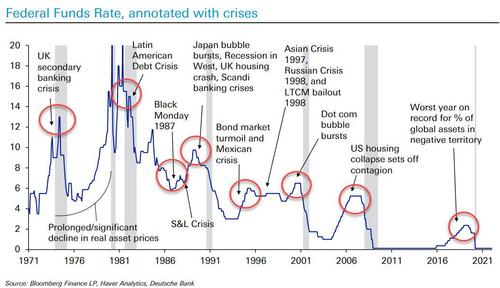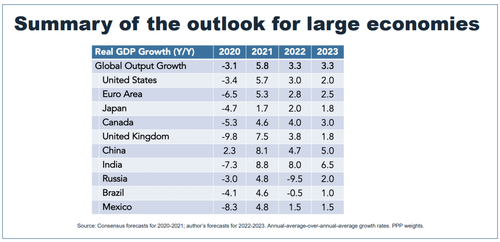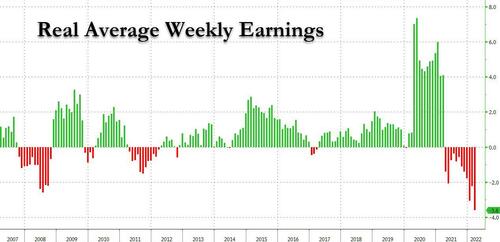Top Washington Think Tank Warns Global Recession Could Arrive Before End Of 2022
The timeline for the looming stagflationary recession continues to creep forward, with the Peterson Institute for International Economics warning that global growth is set to slow dramatically, and warning that "an even more abrupt tightening of monetary policy that causes asset prices to fall sharply and consumers to pull back, combined with a greater slowdown in China than currently expected, could push the economy into recession by the end of this year."
Last week, Deutsche Bank spooked trading desks when it became the first major bank to predict a US recession would strike before the end of 2023, echoing a little seen call from BofA's CIO who predicted a recession as soon as the second half. But now, one of Washington's most closely watched think tanks believes that amid a sharp stagflationary slowdown in 2022, a global recession could arrive as soon as later this year.
Of course, the PIIE assessment was written prior to Tuesday's CPI print, which came in at the hottest rate in more than 40 years. The print was seen as cementing the odds of a 50bps Fed rate hike next month.
But that doesn't change much. Now that the Fed's rate-hike liftoff is in the rear-view mirror, it's worth bringing up this old chart, which shows that the countdown to every recession is triggered by a rate hike from the Fed.
To be sure, the PIIE's base case is not that dire, and the think tank expects global growth to slow to 3.3% this year, down from 5.8%, while US growth is forecast to slow from 3% this year to 2% in 2023. "After a year of recovery from pandemic-related weakness, nearly all countries are seeing a significant slowing of economic growth," Karen Dynan, PIIE senior fellow and former U.S. Treasury Department chief economist, said in the report.
But it's the inflation outlook that's probably of greater interest to consumers, who are struggling with higher prices at the pump and at the grocery check-out. PIIE's outlook for price growth suggests that core inflation in the US will ease to 4.1% this year and ease further to 3% in 2023, which is still above the Federal Reserve’s 2% target. Consumer prices excluding energy and food skyrocketed 6.6% in March from a year earlier.
In the US, data released Tuesday showed headline CPI rose 1.2% in March (vs +1.2% MoM) which sent the headline CPI up a shocking 8.5% YoY (vs +8.4% YoY exp and +7.9% prior). The 1.2% MoM rise is the biggest since Sept 2005 and CPI has risen for 22 straight months. And with wages growing at a far slower pace, the real average weekly earnings collapsed at a 3.6% rate, the biggest drop on record! And no, Putin didn't do this.
All of this adds up to one thing: stagflation.
So, how will the Fed react once this inevitable reality has set in? Well, Bank of America noted last month, war is inherently stagflationary.
And as the reaction in equity markets has already suggested, investors are already looking through the Fed's series of 50 bp rate hikes, all the way to QE5 just as we noted last month.
https://ift.tt/ouAnQlY
from ZeroHedge News https://ift.tt/ouAnQlY
via IFTTT









0 comments
Post a Comment